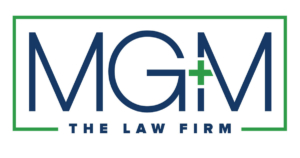The supply chain crisis, trucking, and America’s response
From MG+M The Law Firm. Across the country and the globe, producers are struggling to manufacture and deliver the goods demanded by consumers in what has been called a supply chain crisis. In China, outbound travel restrictions, government closures of ports, and recent power shortages have crippled exports.[1] In America, the crisis is a result…

From MG+M The Law Firm.
Across the country and the globe, producers are struggling to manufacture and deliver the goods demanded by consumers in what has been called a supply chain crisis. In China, outbound travel restrictions, government closures of ports, and recent power shortages have crippled exports.[1] In America, the crisis is a result of three factors. When COVID-19 hit the U.S., many states responded by implementing forced business shutdowns to stop the spread.[2] This greatly diminished business’ ability to supply goods to consumers.[3] In the meantime, consumers’ demand for goods has continued unabated. In fact, in 2020 and 2021, growth of demand in America was the equivalent of 50 million new people joining the economy, according to the vice president of supply chain policy at the National Retail Foundation.[4] On top of that, the U.S. has experienced a labor shortage fueled by a number of factors, including fear of the coronavirus, dissatisfaction with wages, and plans to seize on the time away from work to change career paths.[5] The result is a lack of products to distribute, a scarcity of people to distribute them, and higher demand for those products than ever before.
The trucking industry, responsible for moving 71% of goods in the U.S. economy, is estimated to be 80,000 drivers short of where it needs to be to keep up with demand.[6] The repercussions have been massive. Without truckers to move containers from shipyards to their destinations, the backlog at major ports – like those in southern California – has reached an all-time high.[7] Out of the 5,461 container ships in the world, 66 are anchored off the coast of Southern California, between 20 and 26 off Tybee Island, waiting to access the Port of Savannah, and approximately 24 clogging the coast of Long Island.[8] It can take 8,000 trucks to unload just one of these ships, many of which carry goods which are needed for the upcoming holiday season and will not arrive on time.[9]
President Biden responded by negotiating with the Port of Los Angeles to begin 24/7 operations. The Port of Long Beach is also experimenting with a 24/7 program, and the Union Pacific has expanded to 24/7 rail service at its San Pedro Facility.[10] Likewise, Walmart, Target, The Home Depot, Samsung, UPS, and FedEx have all committed to extending their hours to fight the supply chain crisis.[11] Unfortunately, experts say that these steps will have little impact.[12] The response to the crisis must be more holistic, addressing backlogs at railroads and warehouses and the shortage of laborers, as well as the shipping issue.[13]
On February 24, 2021, President Biden issued Executive Order 14017, which began a comprehensive review of America’s supply chain.[14] The order required risk evaluations and policy recommendations for major areas of the supply chain to be submitted to the President within a set time.[15] Reports on semiconductor manufacturing and advanced supply chains, high capacity batteries, critical minerals and rare earth elements, and pharmaceuticals were required within 100 days of the order.[16] Reports on public health and biological preparedness, information and communications technology, energy, transportation, and agriculture were required within a year.[17] On October 31, 2021, the president followed up with an executive order to allow the Under Secretary of Defense for Acquisition and Sustainment to release materials from the National Defense Stockpile as needed for national defense.[18] This allows the Under Secretary to address supply chain shortfalls in national defense materials.[19]
In Congress, the DRIVE-Safe Act was introduced on February 26, 2019, aimed specifically at addressing trucking problems in the supply chain.[20] Currently, interstate commercial motor vehicle drivers must be at least 21 years old.[21] The DRIVE-Safe Act would create an apprenticeship program which would allow commercial driver’s license holders under 21 to drive interstate, and start to address the massive nationwide shortage of drivers.[22] It is currently in front of the Senate Committee on Commerce, Science, and Transportation, and has bipartisan support.[23] On April 14, 2021, 117 agricultural, manufacturing, retail, food service, and trucking companies sent a letter to transportation leaders in Congress in support of the bill.[24] Meanwhile, supply chain leaders in states like Nevada have also supported the bill, recognizing that much of their freight comes from out of state, and that the DRIVE-Safe Act will allow those goods to be imported more quickly and efficiently.[25]
While the supply chain crisis is a global issue, and interstate trucking is federal, some state leaders have also taken steps to address the shortage of goods. On October 20, 2021, Governor Newsom in California issued an executive order directing state agencies to identify ways to alleviate congestion at California ports, beyond 24/7 workdays.[26] In South Carolina, Governor McMaster issued an executive order on April 1, 2021 to shore up problems in the medical supply chain in his state.[27] The order directs the S.C. Commerce department to prioritize economic development projects and recruitment efforts for pharmaceutical and medical supply manufacturers, to develop marketing campaigns to promote the state as a life science leader, and to invest in existing medical industries in South Carolina.[28]
The supply chain crisis may get worse before it gets better. Vaccine mandates threaten to exacerbate driver shortages, China continues to restrict exports for fear of another COVID outbreak, and consumers consume like never before.[29] There is no single, holistic cure for the crisis. However, the loosening of federal restrictions on the trucking industry, the increase in hours of operations at major American ports, and the willingness of private companies to step up their distribution and production efforts are all measures which will stretch America’s current supply chain as manufacturers and distributors recover from the pandemic.
[1] James Palmer, Why China’s Supply Chains are Breaking Down, Foreign Policy, Oct. 27, 2021, https://foreignpolicy.com/2021/10/27/china-supply-chain-disruption-shipping/.
[2] COVID-19 Restrictions: Map of COVID-19 Case Trends, Restrictions, and Mobility, USA Today, Nov. 2, 2021, https://www.usatoday.com/storytelling/coronavirus-reopening-america-map/.
[3] Matthew Vann, What’s Causing America’s Massive Supply-Chain Disruptions, ABC News, Oct. 15, 2021, https://abcnews.go.com/Politics/whats-causing-americas-massive-supply-chain-disruptions/story?id=80587129.
[4] Grace Kay, Why the Supply Chain is in Crisis, Spurring an ‘Everything Shortage’, Business Insider, Oct. 21, 2021, https://www.businessinsider.com/why-store-shelves-are-empty-supply-chain-crisis-shortages-2021-10.
[5] Roy Maurer, Labor Shortages: The Disconnect and Possible Solutions, SHRM, Aug. 14, 2021, https://www.shrm.org/resourcesandtools/hr-topics/talent-acquisition/pages/labor-shortages-the-disconnect-solutions-unemployment-benefits-childcare-covid-fear.aspx.
[6] Vanessa Yurkevich, Wanted: 80,000 Truck Drivers to Help Fix the Supply Chain, CNN, Oct. 19, 2021, https://www.cnn.com/2021/10/19/economy/trucking-short-drivers/index.html.
[7] Dani Anguiano, Backlog of Cargo Ships at California Ports Reaches an All-Time High, The Guardian, https://www.theguardian.com/business/2021/oct/20/supply-chain-crisis-california-ports-cargo-ships.
[8] Paul Page, Port Logjams Reach Savannah as Container Ships Idle off Georgia Coast, The Wall Street Journal, Sept. 29, 2021, https://www.wsj.com/articles/port-logjams-reach-savannah-as-container-ships-idle-off-georgia-coast-11632935229; Ariel Zilber, Snejana Farberov, James Gordon, Dozens of ships are forced to anchor off coast of New York as they wait to dock in the country’s second-largest port – adding to US supply chain crunch which has forced FedEx to reroute 600k packages a day, Daily Mail, Sept. 25, 2021, https://www.dailymail.co.uk/news/article-10029043/Dozens-ships-coast-New-York-wait-dock-countrys-second-largest-port.html.
[9] Associated Press, Supply bottlenecks leave dozens of container ships anchored off California coast, Mar. 21, 2021, https://ktla.com/news/california/supply-bottlenecks-leave-dozens-of-container-ships-anchored-off-california-coast/; Brett Molina, Supply Chain Issues: What are they and how will shortages impact the holiday shopping season, USA Today, Oct. 15, 2021, https://www.usatoday.com/story/money/2021/10/15/supply-chain-shortages-issues-impact-holiday-shopping/8450237002/.
[10] Anguiano, supra.
[11] Edwin Lopez, Walmart, UPS commit to use night hours at West Coast Ports to ease cargo flows, Supply Chain Dive, Oct. 13, 2021, https://www.supplychaindive.com/news/White-House-supply-chain-commitments-Target-Home-Depot-ILWU-ports/608156/.
[12] Grace Kay, Why Biden’s Plan for 24/7 California Port Operations Won’t Solve the Supply Chain Crisis, Business Insider, Oct. 16, 2021, https://www.businessinsider.com/why-bidens-plan-us-ports-wont-solve-supply-chain-crisis-2021-10.
[13] Id.
[14] See Exec. Order on America’s Supply Chains.
[15] Id.
[16] Id at Sec. 3.
[17] Id at Sec. 4.
[18] Exec. Order on the Designation to Exercise Authority Over the National Defense Stockpile Sec. 3.
[19] Tony Capaccio, Justin Sink, Biden Announces New Steps to Address Supply-Chain Disruptions, Time, Oct. 31, 2021, https://time.com/6112213/biden-supply-chain-disruptions/.
[20] S.569 DRIVE-Safe Act, https://www.congress.gov/bill/116th-congress/senate-bill/569.
[21] 49 CFR 391.11(b)(1).
[22] S.569 DRIVE-Safe Act, https://www.congress.gov/bill/116th-congress/senate-bill/569/all-info.
[23] Id.
[24] DRIVE-Safe Act Coalition Support Letter, https://www.trucking.org/sites/default/files/2021-04/DRIVE%20Safe%20Act%20Coalition%20Support%20Letter%2C%20FINAL%204.14.21.pdf.
[25] Maddie White, Nevada Trucking Leaders Propose Solutions to Supply Chain Crunch, Oct. 19, 2021, https://www.fox5vegas.com/news/nevada-trucking-leaders-propose-solutions-to-supply-chain-crunch/article_9bb25a6c-3144-11ec-9002-7f07b4b2884b.html?block_id=1002214.
[26] Governor Newsom Signs Executive Order to Help Tackle Supply Chain Issues, ca.gov, CA Gov., Oct. 20, 2021, https://www.gov.ca.gov/2021/10/20/governor-newsom-signs-executive-order-to-help-tackle-supply-chain-issues/.
[27] Gov. McMaster Announces Economic Development Initiative to Expand Recruitment of Pharmaceutical Companies, Shore Up Emergency Supply Chains, SC Gov., Apr. 1, 2021, https://governor.sc.gov/news/2021-04/gov-mcmaster-announces-economic-development-initiative-expand-recruitment.
[28] Molly Hulsey, Governor Issues Executive Order to Safeguard Medical Supply Chains, Apr. 1, 2021, https://gsabusiness.com/news/government/80287/.
[29] Eric Miller, ATA Warns Vaccine Mandate Could Worsen Supply Chain Troubles, Transport Topics, Oct. 21, 2021, https://www.ttnews.com/articles/ata-warns-vaccine-mandate-could-worsen-supply-chain-troubles; Palmer, supra.
